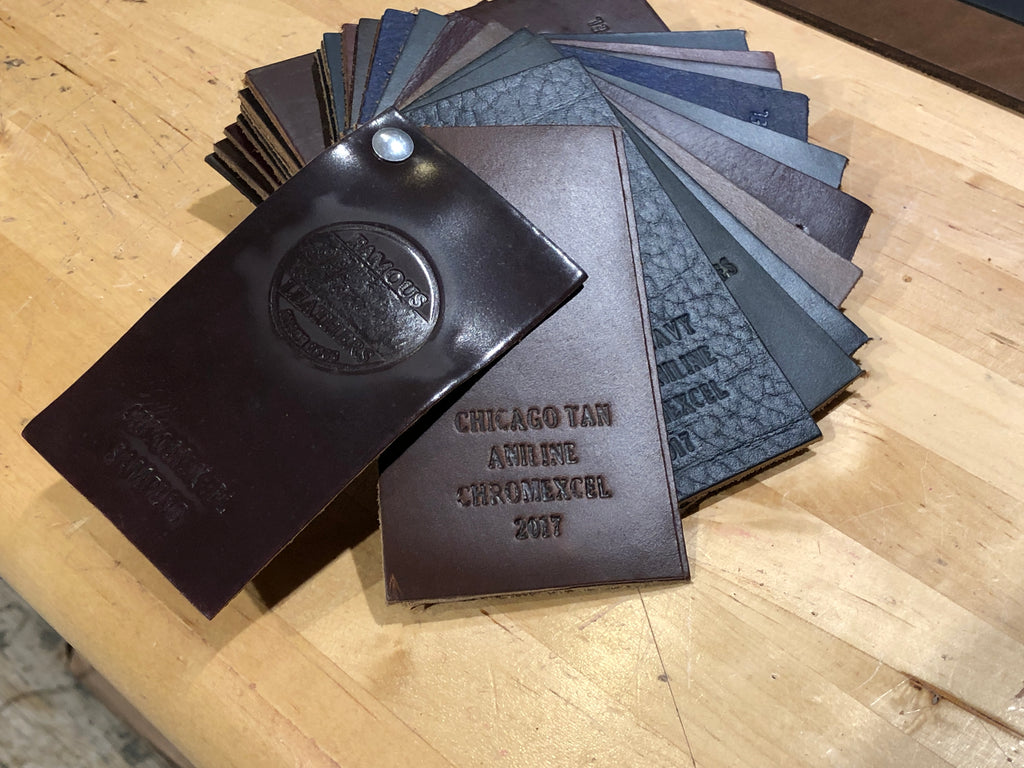Subscribe to the Ashland Youtube Channel
These are my personal Alden and Context Roy Boots made with Brown Chromexcel leather. I absolutely love the way they look, feel, and how durably rugged they are. Chromexcel’s history reflect this ruggedness in a surprising, and rather tough-guy way. Did you know that Chromexcel’s origin relates to Gilette safety razors and tanks from WW1?
From their start in 1905, Horween has been famous for shell cordovan. The cordovan leather was made solely for use in razor strops. Shortly after the tannery started Gilette popularized the safety razor. This, of course, correlated with a large decline in the necessity of razor strops. The tannery quickly needed to diversify. They developed a combination tanned leather using the performance characteristics from a chrome base-tannage (chrome tanning has heat resistance, a stronger tensile strength, and more flexibility) and combined it with the desirable aesthetic characteristics of a vegetable re-tannage. Vegetable tanning typically gives the leather the ability to mold to a form, breathe, and develop an exceptional patina.
Around 1913 Horween Leather Company in Chicago needed to diversify their product offerings and developed Chromexcel for mechanical uses. One of the main uses for Chromexcel at the time was for use in motor seals and gaskets. With world war 1 starting just after the leather was developed in 1914, Chromexcel became heavily used in the war effort. A lot of Chromexcel was made for motor seals in large trucks and even tanks. A leather seal is preferred by highly-experienced mechanics and engineers because the seal slowly breaks over time. An operator can actually hear the seal failing slowly which them a heads up that it is time to replace the seal . Whereas a synthetic seal fails immediately and completely leaving the operator without notice.
Today Chromexcel is still hand-crafted by Horween using the same processes and formulations as they did in 1913. Rich blends of hot oils, waxes, and greases are impregnated into the leather giving it not only a great feel but a unique pull up effect. The pull up effect can be observed by flexing the leather. I find this pull up gives the leather a beautiful depth of color.
Speaking of color, Horween offers a nice variety of colors for Chromexcel. However, because of the cosmetic-grade waxes, oils, and greases used in the tanning process these colors are all earth tones.

Interestingly, Chromexcel was marketed as self-polishing. This means that you often do not need to put any conditioner or polish on the leather to restore the original luster of your boots. You can breathe the life back into them by just giving them a good brushing every once in awhile. I haven’t brushed my Roy boots in a very long time but, as you can see here, all you need to do is give the leather a thorough brushing. You can breathe the life right back into them
I have had many products made in Chromexcel leather. The leather has a refined ruggedness that just lasts. You will find Chromexcel in many products today including boots, shoes, jackets, and the watch straps, valet trays, and wallets that I make. The most popular Chromexcel color that we sell is natural followed quickly by brown and black.
Thanks so much for checking out some of the history behind the world’s best leather. Let me know what your favorite chromexcel boots or wallet is in the comments below!



